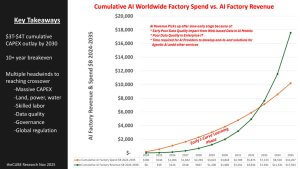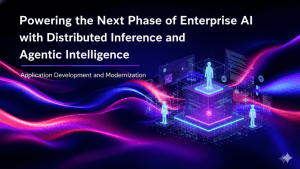Code reviews remain one of the most time-intensive bottlenecks in modern software development. Manual reviews consume as much as 15–30% of developer time, yet still suffer from context switching, human error, and limited throughput. With developers able to realistically review about 400 lines of code a day, release velocity often slows at the quality gate.
CodeRabbit, an AI-powered code review platform, is positioning itself as the central quality checkpoint for CI/CD pipelines. The company claims its technology can reduce bugs, accelerate pull request (PR) approvals, and free up senior engineers to focus on feature development. It is clear that AI is moving deeper into the governance and quality layer of the development lifecycle.
Quality Checks in the Modern Pipeline
Organizations have long relied on static analyzers and manual reviews to safeguard code quality, but both approaches show limitations:
- Static code analyzers generate high volumes of false positives and rely on rigid rules.
- Manual code reviews demand significant time investment and often introduce human error.
- Throughput constraints mean release cycles bottleneck at review stages, slowing delivery.
The result is a tradeoff: speed versus quality. Many teams either ship quickly with more risk or enforce thorough reviews at the expense of productivity.
What CodeRabbit Offers
CodeRabbit positions itself as the “AI code review layer” that integrates into IDEs, CLIs, and CI/CD workflows. Its features span both automation and orchestration:
- Automated first-pass reviews with PR summaries and 1-click committable fixes.
- Collaborative team reviews through AI-assisted chat and contextual prompts.
- Central quality check that unifies linting, SAST (static application security testing), and AI-based analysis.
- Configurable learnings that allow reviews to adapt to team preferences over time.
- Context enrichment from MCP servers (e.g., Notion, Sentry) and web queries for vulnerability detection.
By combining static analysis with generative AI, CodeRabbit aims to create a more comprehensive and adaptive review layer.
AI as the Quality Orchestrator
We see CodeRabbit as part of a wider movement where AI is shifting from individual developer assistance (code generation, autocomplete) into team-level orchestration around quality.
- Embedding AI into workflows – Instead of AI suggesting code locally, CodeRabbit embeds at the PR and CI/CD layer, centralizing quality governance.
- Absorbing human bottlenecks – Tasks like line-by-line review, documentation, and unit test generation are offloaded, freeing engineers for innovation.
- Moving from automation to orchestration – Beyond automating linting or static checks, CodeRabbit integrates across systems, correlates context, and aligns reviews with organizational standards.
This reflects a broader agentic AI trend: software not just assisting with tasks, but actively managing and enforcing critical checkpoints in the development lifecycle.
Measured Outcomes
According to customer data shared in the briefing, teams using CodeRabbit reported:
- Time to first code review reduced from ~5 days to ~2 days.
- Time to merge PRs cut in half (12 hours → 6 hours).
- Pull requests per month increased 36% (520 → 705).
- Forced merges dropped by more than 60% (8.6% → 3.5%).
These metrics suggest tangible improvements in velocity and quality, though results will vary by environment and integration maturity.
Benefits for IT Decision Makers
For engineering leaders, AI-driven code review platforms like CodeRabbit present opportunities to balance velocity and quality without compromise. They accelerate delivery cycles by automating first-pass reviews and providing sub-second feedback, while also improving code quality through detailed comments, refactor suggestions, and automatic test or documentation generation. Integrated SAST and vulnerability detection strengthen the security posture, and freeing senior engineers from repetitive checks boosts overall productivity. Just as importantly, reducing manual toil can have a cultural impact, improving developer sentiment and team morale.
Challenges and Considerations
Despite the benefits, IT leaders should weigh several factors when considering AI-driven review platforms:
- Trust and accuracy – With studies showing 41% more bugs in AI-generated code, skepticism remains about whether AI tools can reliably catch their own errors.
- Governance models – Enterprises must establish review policies for AI-generated feedback, ensuring accountability and auditability.
- Integration depth – While CodeRabbit offers SAST, linter, and IDE integrations, full enterprise adoption requires seamless alignment with existing DevOps stacks.
- Cost vs. value – Pricing ranges from $12–30 per month per developer, with enterprise tiers available. Leaders must assess ROI against existing quality investments.
As with other AI in software development, adoption will likely follow a progressive path: starting with low-risk automation, then layering in orchestration and compliance over time.
What to Expect Next
For IT decision makers, the implications of CodeRabbit and similar platforms are significant. The rise of AI-driven quality orchestration has the potential to reshape how development teams are structured and how work is governed. One area to watch closely is the expansion of AI-native review platforms into central CI/CD checkpoints across the enterprise. As these systems become embedded at critical stages of the pipeline, they will influence both speed and quality outcomes at scale.
Another consideration is governance. Enterprises will need to establish clear frameworks that define how much authority to delegate to AI systems and what oversight mechanisms are required. This ensures accountability and prevents AI-generated reviews from being accepted blindly without the proper checks.
Equally important are measurement frameworks. Success should not be judged solely by faster delivery cycles, but also by improvements in code quality, reduction in defect rates, and the overall developer experience. Metrics that balance velocity with rigor will determine the true business value of AI review platforms.
Ultimately, whether AI-driven quality orchestration becomes a cornerstone of enterprise DevOps or remains a supplementary tool will depend on how effectively these platforms can strike the balance between speed, quality, and trust.
The Next Layer of AI in DevOps
CodeRabbit’s positioning highlights a broader trend in the developer toolchain: AI is moving from productivity assistants to quality enforcers. By combining automated reviews, contextual enrichment, and orchestration across the CI/CD stack, platforms like CodeRabbit aim to reduce bottlenecks, improve security, and accelerate feature delivery.
For IT leaders, the key message is clear: the code review stage is ripe for transformation. Those who prepare governance, integration, and measurement frameworks now will be best positioned to harness AI-driven quality orchestration—while maintaining the rigor required for enterprise-grade software delivery.



